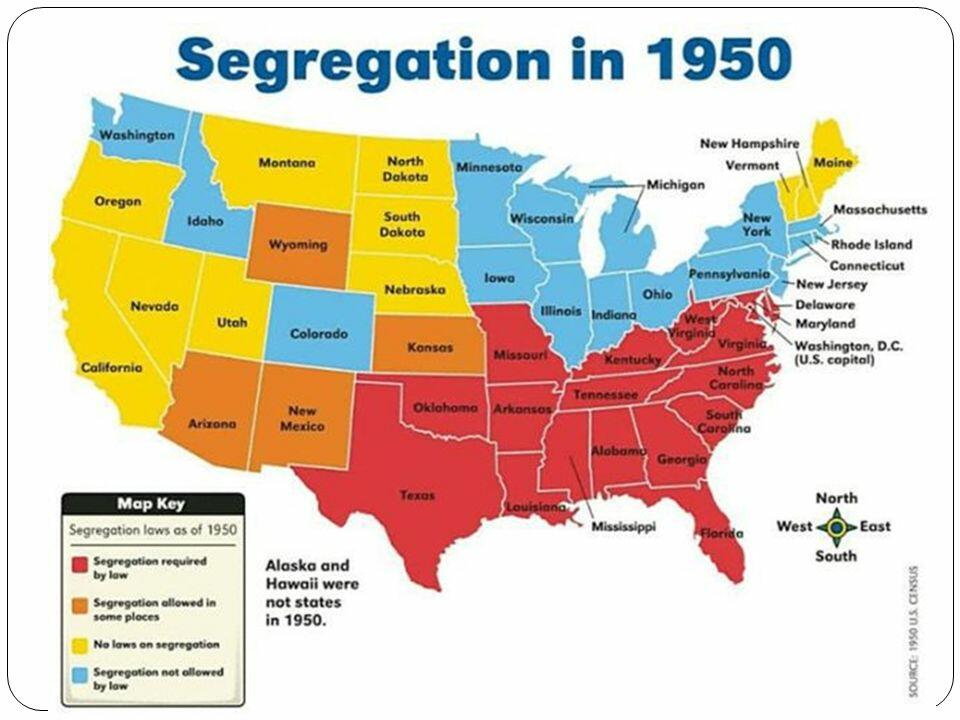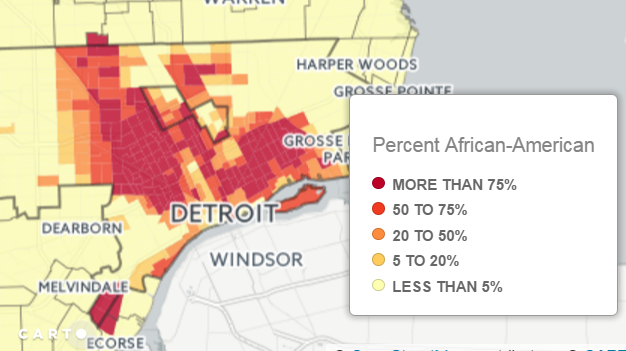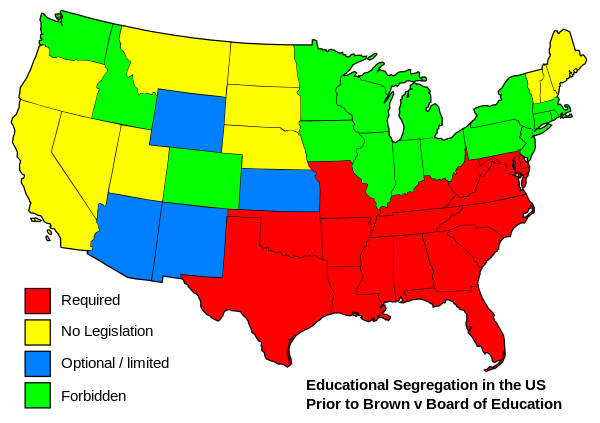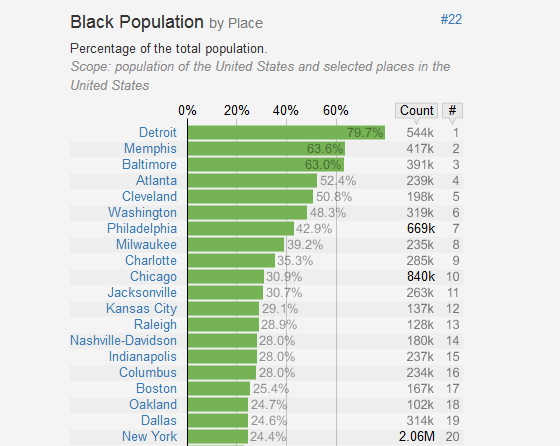Introduction
Segregation in the USA is a policy of forced separation of any group of the population. It is usually referred to as a form of religious and racial discrimination. Spatial segregation refers to the settlement of residents in the city as a result of their economic and racial characteristics (Omi & Winant, 2014). So there are ghettos, where a disadvantaged population is often concentrated, poverty, crime and low level of education thrives.
Enclaves are formed, which are associations of representatives of one nationality, immigrants from any country. One of the most segregated cities is Detroit. Due to the huge number of representatives of different cultures and nationalities in big cities, the problem of racial segregation is very relevant there. It affects many aspects of life, from the rental of apartments and houses that may not be available to African Americans in some areas because of racial prejudice.

Industrial Impulse
Detroit was destined to become a major industrial city. It was founded in 1701 as a fort on the shore of the strait connecting two of the six great lakes — Huron and Erie. By the end of the nineteenth century, Detroit flourished without any auto industry — its location on the lakes on the border with Canada made it an important transportation hub. Cargo flows passed through the city, shipbuilding developed. Tourists were attracted by the appearance of Detroit, which in those years was called “Western Paris” for similar architecture and spacious avenues. The city developed very quickly and was one of the first in the United States to be fully electrified.
It was in the Edison Electric Company where the chief engineer was Henry Ford, who in his spare time was fond of designing cars. In 1903, he founded his own automobile company, the Ford Motor Company, and by 1910, he had built a vast automobile factory in Detroit’s Highland Park Ford Plant (Sugrue, 2014). The first conveyor in the industry started working in Highland Park; it made the production of cars mass and cheap. Along with the Ford, other major car companies appeared in the city: Cadillac, Dodge, Oldsmobile, Buick, and others. Detroit in those years was home to many wealthy American people in business who were willing to invest in a new industry.
Revenues from automobile production also affected the appearance of the city. The headquarters of the companies were located in huge skyscrapers; luxury hotels, concert halls, shops, museums, and libraries were built nearby. Businessmen allocated huge money: in the order for the next skyscraper there often was a simple requirement: «Construct the most beautiful building in the world». But money was willingly spent not only by businessmen. Salaries in the automotive industry were huge, so even clerks and middle-hand workers preferred to settle in their own homes, which built up huge areas around the business center. Detroit was increasingly focused on cars: the city built luxury roads, and public transport became unpopular.
Crisis and Segregation
Prosperity gave rise to the first problems of Detroit. The city attracted more and more workers. If at first, they were migrants from Canada and Europe, they were replaced by African Americans after the tightening of laws in 1924. In those years, racial segregation still reigned in the United States, and it manifested itself in Detroit in full. Only the cheapest housing was sold to black people, as a result of which the first ghettos began to appear. The conflicts were continually happening in the factories and on the streets. The Ku Klux Klan and the Black Legion opposing it were active in the city; members of both groups were regularly detained for riots and murders.
Decentralization primarily hit the most vulnerable segments of the population — if white people moved to live closer to new factories or got to them by car, then it became more difficult for black people to find a job. They couldn’t get housing, cars were often expensive, and Detroit authorities did not care about public transport. Further events only accelerated its stratification. In 1943, the management of one of the plants put three black workers on one conveyor with white.
Protest against such a decision gathered 25 thousand people, and three weeks later the city was swept by a wave of street riots, which involved more than 100 thousand people. White and black people participated in fights, smashed each other’s houses; more than 6 thousand soldiers entered the city to solve the situation. 34 people were killed, 600 injured, and more than 1800 went to jail — 85% of them were black (Sugrue, 2014). People were afraid to leave the house without weapons.

After World War II, the black population of the United States began to raise their heads — and Detroit was the center of the struggle for racial equality. In 1963, Martin Luther King gave there a speech, which became a kind of rehearsal for the performance “I have a dream,” presented in Washington in two months (Sugrue, 2014). However, business and government resisted these trends. In the 50s and 60s several huge highways were built on the territory of the poorest neighborhoods, the inhabitants of which lacked the influence and money to resist the huge state machine.
Black people answered as they could – with fists, stones, and arson. In 1967, riots started again in the city. The police tried to detain the participants of the party in honor of the return of two soldiers from Vietnam. The crowd quickly got out of control — people began to smash everything around them, rob shops, then the first building caught fire. The riots involved more and more locals, and this cannot be said about the police: it was Sunday, so the command could not gather reinforcements for a long time. There was a conflict between the Governor of the state and the US President. That is why troops entered Detroit only two days later — before that, the city was in the hands of a raging crowd, with both African Americans and whites involved.
All this led to a predictable result — the city was becoming a less comfortable place to live, especially in comparison with the prosperous suburbs. After a record population in the 50s migration from Detroit increased – mostly Whites and some wealthy families of African Americans left the city. They were followed by a small business: trade and the provision of services are more profitable where there is demand.
The authorities tried to rectify the situation, but their actions sometimes made things worse. The most famous example is the attempt of desegregation in schools. In 1970, the Detroit Board of education ordered schools to recruit white and black students in equal proportions (Rothstein, 2015). The authorities of districts and suburbs began to cancel this decision; the case quickly reached the court. The last took the rashest decision possible — it returned desegregation only in the city, and the suburbs were allowed to leave the “white” schools. Many experts believe that this caused even more damage to the town than the protests of 1967.
In the seventies, Detroit’s demographics changed dramatically: while at the beginning of the decade whites accounted for more than half of the city’s population, by 1980 their numbers had fallen to 34%, continuing to decline (Grigoryeva & Ruef, 2015). Against the background of growing crime and unemployment, whites did not want their children to study with not prosperous classmates and left.

Crime and Disorder
The fuel crisis of 1973 was added to the existing problems. The newly created Organization of oil exporting countries raised fuel prices, which particularly hit the United States, which has traditionally produced large and uneconomical cars. Because of the increased spending in the seventies, people began to buy subcompact Japanese and European production. Local producers suffered losses by closing factories and firing employees.
Over a decade, Detroit has become not only a “black” but also a very criminal city. The poor African-American population was massively left homeless due to unemployment. Street gangs appeared one after another, the number of robberies, arson, and murder increased. Instead, the title of automotive capital Detroit got the title of the capital of drug trafficking. The city’s new entertainment was “Devil’s night” — the night of Halloween when some residents huddled in groups and burned the houses where drugs were sold. Other concerned residents declared “Angel’s night,” organized into squads and patrolled the city, stopping arson.
Recovering Actions
Now the situation in Detroit began to align, although it is still far from ideal. The population has declined from almost 2 million to 700,000, about 80% of whom are black (Grigoryeva & Ruef, 2015). Unemployment in the worst years reached 25% and now stands at more than 8%, which is twice higher than in Michigan (Lichter, Parisi, & Taquino, 2015). The number of serious crimes is also 2-3 times higher than the US average. There are empty areas in the city, where houses are sometimes sold for several hundred dollars. But residents have to invest a decent amount in repairs to live in areas where it is almost impossible to find a job.

The cities poor don’t pay taxes — which means Detroit doesn’t have enough money for the most important things, like building a good police force or a decent transportation system. By 2013, the city authorities recognized that they were unable to pay off their debts, and began bankruptcy proceedings (Farley, 2015). Detroit became the largest city in the United States, which declared bankruptcy.
Nevertheless, it is impossible to call the city dead. Its business center is still beautiful: trying to get the business back to the city, Detroit executives have been investing in business neighborhoods for a long time. The white population mostly lives nearby, followed by ghettos and abandoned areas that give way to prosperous suburbs. Detroit and the surrounding area are still home to major automakers, as are their factories.
Conclusion
Many experts note that today Detroit is at the very beginning of its revival. Still frightening indicators of unemployment and crime are gradually falling. The young generation of Detroit wants to work, not steal or smoke weed, and the authorities have finally begun to help these endeavors. The revival has already made the city a good advertisement: today, despite all the problems, Detroit is often called one of the most exciting places for tourism in the United States. Detroit’s history has shown that technological and industrial leaps can not only lead to prosperity but also create a crisis. And even though the US is now almost done with racial issues, no one can guarantee that history will not make the second round.
References
Grigoryeva, A., & Ruef, M. (2015). The historical demography of racial segregation. American Sociological Review, 80(4), 814-842.
Lichter, D. T., Parisi, D., & Taquino, M. C. (2015). Toward a new macro-segregation? Decomposing segregation within and between metropolitan cities and suburbs. American Sociological Review, 80(4), 843-873.
Omi, M., & Winant, H. (2014). Racial formation in the United States. Routledge.
Rothstein, R. (2015). The racial achievement gap, segregated schools, and segregated neighborhoods: A constitutional insult. Race and Social Problems, 7(1), 21-30.
Sugrue, T. J. (2014). The origins of the urban crisis: Race and inequality in postwar Detroit-Updated edition (Vol. 6). Princeton University Press.
Farley, R. (2015). The bankruptcy of Detroit: What role did race play? City & Community, 14(2), 118-137.